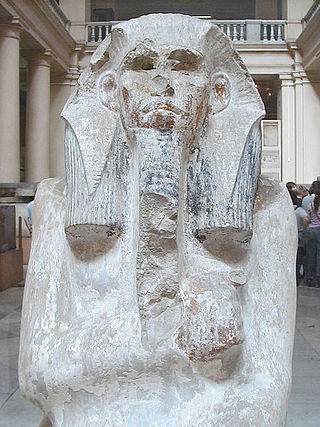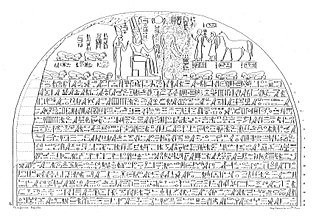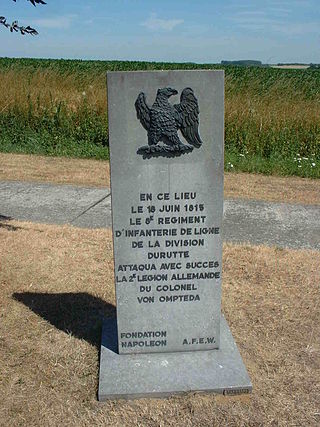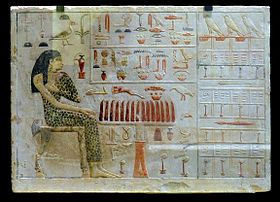
The Bronze Age is a historical period lasting from approximately 3300 to 1200 BC. It is characterized by the use of bronze, the use of writing in some areas, and other features of early urban civilization. The Bronze Age is the middle principal period of the three-age system, between the Stone and Iron Ages. This system was proposed in 1836 by Christian Jürgensen Thomsen for classifying and studying ancient societies and history. Worldwide, the Bronze Age generally followed the Neolithic period, with the Chalcolithic serving as a transition.
The 3rd millennium BC spanned the years 3000 to 2001 BC. This period of time corresponds to the Early to Middle Bronze Age, characterized by the early empires in the Ancient Near East. In Ancient Egypt, the Early Dynastic Period is followed by the Old Kingdom. In Mesopotamia, the Early Dynastic Period is followed by the Akkadian Empire. In what is now Northwest India and Pakistan, the Indus Valley civilization developed a state society.

Djoser was an ancient Egyptian king of the 3rd Dynasty during the Old Kingdom, and was the founder of that epoch. He is also known by his Hellenized names Tosorthros and Sesorthos. He was the son of King Khasekhemwy and Queen Nimaathap, but whether he was also the direct successor to their throne is unclear. Most Ramesside king lists identify a king named Nebka as preceding him, but there are difficulties in connecting that name with contemporary Horus names, so some Egyptologists question the received throne sequence. Djoser is known for his step pyramid, which is the earliest colossal stone building in ancient Egypt.

A kurgan is a type of tumulus constructed over a grave, often characterized by containing a single human body along with grave vessels, weapons and horses. Originally in use on the Pontic–Caspian steppe, kurgans spread into much of Central Asia and Eastern, Southeast, Western and Northern Europe during the 3rd millennium BC.

Ancient art refers to the many types of art produced by the advanced cultures of ancient societies with different forms of writing, such as those of ancient China, India, Mesopotamia, Persia, Palestine, Egypt, Greece, and Rome. The art of pre-literate societies is normally referred to as prehistoric art and is not covered here. Although some pre-Columbian cultures developed writing during the centuries before the arrival of Europeans, on grounds of dating these are covered at pre-Columbian art and articles such as Maya art, Aztec art, and Olmec art.

Piye was an ancient Kushite king and founder of the Twenty-fifth Dynasty of Egypt, who ruled Egypt from 744–714 BC. He ruled from the city of Napata, located deep in Nubia, modern-day Sudan.

Psamtik II, known by the Graeco-Romans as Psammetichus or Psammeticus, was a king of the Saite-based Twenty-sixth Dynasty of Egypt. His prenomen, Nefer-Ib-Re, means "Beautiful [is the] Heart [of] Re." He was the son of Necho II.

Domus de Janas are a type of pre-Nuragic rock-cut chamber tomb found in Sardinia. They consist of several chambers quarried out by the people of the San Ciriaco through Ozieri cultures and subsequent cultures, resembling houses in their layout.

A stele, or occasionally stela when derived from Latin, is a stone or wooden slab, generally taller than it is wide, erected in the ancient world as a monument. The surface of the stele often has text, ornamentation, or both. These may be inscribed, carved in relief, or painted.
Nepherites II or Nefaarud II was the last pharaoh of the feeble and short-lived Twenty-ninth Dynasty, the penultimate native dynasty of Egypt.

Concentrations of megaliths, dolmens and stone labyrinths dating between the end of the 4th millennium and the beginning of the 2nd millennium B.C. have been found throughout the Caucasus Mountains, including Abkhazia. Most of them are represented by rectangular structures made of stone slabs or cut in rocks with holes in their facade. These dolmens cover the Western Caucasus on both sides of the mountain ridge, in an area of approximately 12,000 square kilometres of Russia and Abkhazia.

The Department of Ancient Egypt is a department forming an historic part of the British Museum, with Its more than 100,000 pieces making it the largest[h] and most comprehensive collection of Egyptian antiquities outside the Egyptian Museum in Cairo.

A false door, or recessed niche, is an artistic representation of a door which does not function like a real door. They can be carved in a wall or painted on it. They are a common architectural element in the tombs of ancient Egypt, but appeared possibly earlier in some Pre-Nuragic Sardinian tombs known as Domus de Janas. Later they also occur in Etruscan tombs and in the time of ancient Rome they were used in the interiors of both houses and tombs.

Ancient Egyptian literature was written with the Egyptian language from ancient Egypt's pharaonic period until the end of Roman domination. It represents the oldest corpus of Egyptian literature. Along with Sumerian literature, it is considered the world's earliest literature.

Ancient Egyptian Hieroglyphs: A Practical Guide is one of the modern primers on the Egyptian language and hieroglyphs, from the late 20th to early 21st century.

The ancient Near East was the home of early civilizations within a region roughly corresponding to the modern Middle East: Mesopotamia, ancient Egypt, ancient Persia, Anatolia and the Armenian highlands, the Levant and the Arabian Peninsula. The ancient Near East is studied in the fields of ancient Near East studies, Near Eastern archaeology, and ancient history.

The ancient Egyptian Bone-with-meat hieroglyph represented: "ancestry, inherit", and phonetic isw, iw' ; a determinative for the femur, (iw'); and swt, for the tibia.

A lintel or lintol is a type of beam that spans openings such as portals, doors, windows and fireplaces. It can be a decorative architectural element, or a combined ornamented/structural item. In the case of windows, the bottom span is referred to as a sill, but, unlike a lintel, does not serve to bear a load to ensure the integrity of the wall. Modern-day lintels may be made using prestressed concrete and are also referred to as beams in beam-and-block slabs or as ribs in rib-and-block slabs. These prestressed concrete lintels and blocks can serve as components that are packed together and propped to form a suspended-floor concrete slab.
Shepset-ipet was an ancient Egyptian princess living during the late 2nd Dynasty. She may have been the daughter of king (pharaoh) Peribsen or Khasekhemwy. She is known by her decorated slab stela.

Meni, Meny or Menankhpepy was an ancient Egyptian high official who lived during the reigns of Pepy I and Merenre Nemtyemsaf I, in the late Sixth Dynasty. Most of what is known about his life comes from his mastaba burial tomb in the Dendera Necropolis, a few hundred metres south of the Temple to Hathor. This tomb was explored during 1897 and 1898 by a team led by the British archaeologist Flinders Petrie.


















